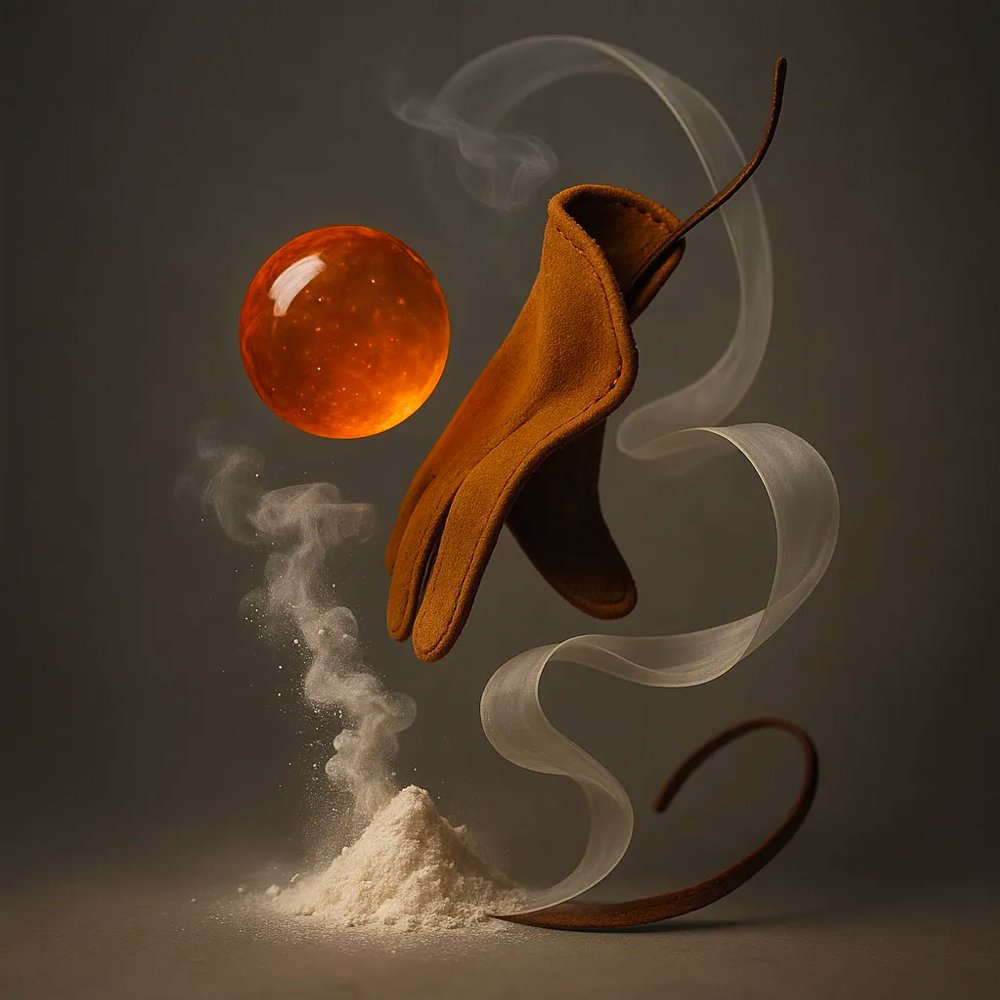TECHNICAL INGREDIENT OVERVIEW
🏭 Manufacturer: dsm-firmenich (dsm-firmenich, 2025)
🔎 Chemical Name (IUPAC): Not applicable — proprietary multi-component base
🧪 Synonyms: Castoreum Synth 184004 D; Synthetic Castoreum Base; Castoreum Replacer
📂 CAS: Mixture (no single CAS)
📘 FEMA: None (non-flavour use)
⚖️ Molecular Weight: Not applicable (mixture)
📝 Odor Type: Animalic / leathery
📈 Odor Strength: High (typical dosage 0.05 – 0.2 % of concentrate)
👃🏼 Odor Profile: Warm leather, smoky-phenolic facets, subtle dried-fruit/plum nuance (Arctander, 1960; Sell, 2014)
⚗️ Uses: Fine-fragrance leather, chypre, fougère, tobacco and oud accords; adds warmth, diffusion and fixative depth
🧴 Appearance: Cloudy brown liquid; flash-point ≈ 100 °C (dsm-firmenich, 2025)
What Is Castoreum Synth 184004 D?
Castoreum Synth 184004 D is an animal-free speciality base engineered by dsm-firmenich to reproduce the characteristic warm, smoky-leathery signature of natural beaver castoreum while satisfying modern ethical, sustainability and regulatory expectations. The formula combines captive and commercial aroma molecules with phenolic, balsamic and leathery facets to deliver high impact and long-lasting diffusion.
Historical Background
Natural castoreum—the alcohol extract of dried castor sacs from Castor canadensis and C. fiber—was prized in medicine since antiquity and adopted in perfumery during the 18 th century (Arctander, 1960). Iconic creations such as Shalimar (Guerlain, 1925) and Cuir de Russie (Chanel, 1924) relied on its rich leather nuance. Because harvest requires killing the beaver, populations declined during the 19th century fur trade (National Geographic, 2014). Wildlife protection (CITES listings) and shifting consumer ethics drove the fragrance industry to develop synthetic reconstitutions from the late 1950 s onward (Sell, 2014).
Olfactory Profile
Scent family: Animalic / leather
Main descriptors: Leathery, smoky, phenolic, warm, faint dried-fruit
Intensity & tenacity: Very high impact; perceptible on blotter ≥ 48 h
Volatility / fixative role: Low-volatility phenolics slow evaporation of allied notes, enhancing longevity.
Applications in Fine Fragrance
Bridges Birch Tar smoke with balsamic amber or Civetone musks.
0.15 % with 0.10 % Birch Tar substitute yields a classic “Russian leather” accord.
Trace levels (≈ 0.05 %) warm oriental ambers without overt leather character.
Synergises with IsoButyl Quinoline for green-leather chypres.
Performance in Formula
Enhances diffusion and depth of wood-smoke accords and oud blends.
Highly stable in alcohol and triethyl citrate; minor discolouration may occur in strongly alkaline soaps.
Acts as a fixative, smoothing transitions between top-, heart- and base-notes.
Industrial & Technical Uses
The base is primarily employed in luxury fine fragrances, artisanal candles and niche incense where vegan claims are critical. It is neither FEMA-listed nor permitted for flavour use.
Regulatory & Safety Overview
IFRA 51: Synthetic castoreum bases are subject to the QRA-2 skin-sensitisation framework; natural castoreum (8023-83-4) is classified under NCS J2 (IFRA, 2020).
EU Cosmetics Regulation 1223/2009: Permitted; natural castoreum import requires CITES documentation (European Parliament & Council, 2009).
CITES: Trade in beaver derivatives is monitored; several range states impose export restrictions (National Geographic, 2014).
Halal: Certified Halal by dsm-firmenich.
FEMA/GRAS: Not listed.
Why Replace Natural Castoreum?
Animal welfare: Harvest necessitates killing beavers; synthetics eliminate animal harm (National Geographic, 2014).
Sustainability & supply: Wild populations fluctuate and face protection; synthetics provide consistent, scalable supply.
Regulatory compliance & transparency: Wildlife-trade controls and consumer preference for vegan, cruelty-free products favour synthetic alternatives.
Quality & safety: Reconstitutions can exclude allergenic polyphenols, offering cleaner colour and odour profiles (Kohl & Schwarze, 2024).
Cost efficiency: Natural castoreum absolute (> €15 000 kg⁻¹) is orders of magnitude more expensive than synthetic bases.
References
Arctander, S. (1960). Perfume and Flavor Chemicals (Aroma Chemicals).
dsm-firmenich. (2025, June 11). Castoreum Synth 184004 D [Product page]. Retrieved from https://firmenich.ch/product/castoreum-synth-pe-184004-d-0
European Parliament & Council. (2009). Regulation (EC) No 1223/2009 on cosmetic products. Official Journal of the European Union.
International Fragrance Association. (2020). IFRA Fragrance Ingredient Glossary (April 2020 ed.). IFRA.
Kohl, W., & Schwarze, D. (2024). Phenolic signatures of beaver castoreum as ecological cues. Journal of Chemical Ecology, 50(3), 211–225. https://doi.org/10.1007/s10886-024-01345-7
National Geographic. (2014, March 6). Where does vanilla flavoring come from? Probably not beaver butts.https://www.nationalgeographic.com
Sell, C. (2014). The Chemistry of Fragrances (2nd ed.). Royal Society of Chemistry.











